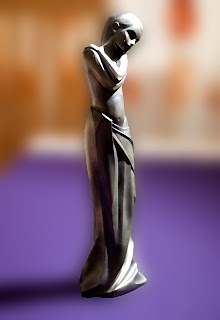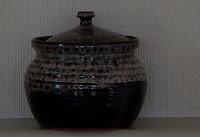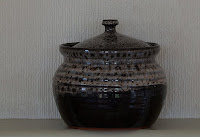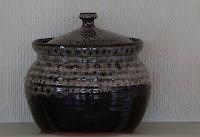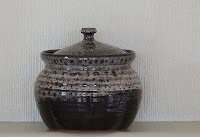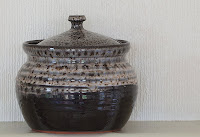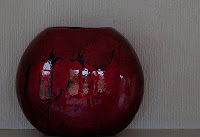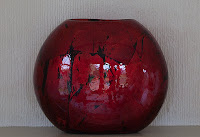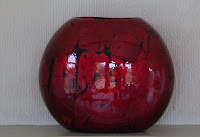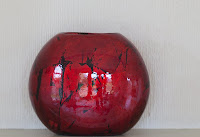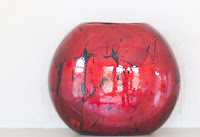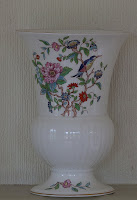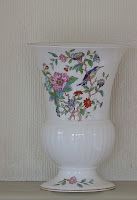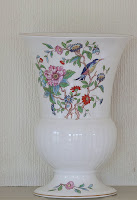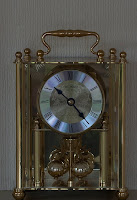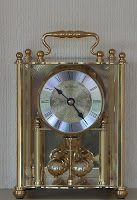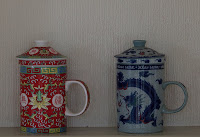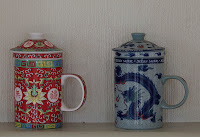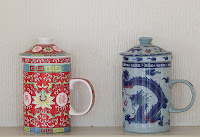All the following images were taken on Market day in Bury St Edmunds. As can be seen it was an overcast day but even so I had to set the aperture at f20 so that I could achieve the range of shutter speeds desired. There was no enhancement of the images in Photoshop.
ISO 100 Shutter speed 1/10. Blurred image partly because of movement but also because I am unable to hand hold a camera sufficiently still at such a slow shutter speed. I had decided not to use a tripod because of the problems of being amongst a lot of people intent on shopping. The effect of camera shake is evident in the sign "Tom's Snacks".
ISO 200 Shutter speed 1/13. I would have expected a higher shutter speed for the increase in ISO. Presumably the level of light changed or I had pointed the camera at a darker part of the image. Image suffers from the same problems as the one shot at an ISO of 100.
ISO 400 Shutter speed 1/30. There is quite an improvement in the quality of this image which given the slow shutter speed surprised me. Still some blurring from movement.
ISO 800 Shutter speed 1/40. Again not the shutter speed increase that I had anticipated but there is a noticeable difference in the overall sharpness of the image.
ISO1600 Shutter speed 1/160. I increased the shutter speed to this level to ensure a shutter speed that was in excess of the level I need to hand hold the camera. The image is acceptably sharp and there is no movement.
I moved my position in the market for the next set of images to change the overall light level.
ISO 100 Shutter speed 1/10. Comparing this image with the first one of the previous set there is a noticeable difference in the level of sharpness. Although it is not of an acceptable level it was much better than I would normally expect.
ISO 200 Shutter speed 1/30. The increase in ISO produced a faster shutter speed as one would expect.Quite a good image that could be 'rescued' in Photoshop.
ISO 400 Shutter speed 1/60. Again an acceptable image. This is probably due to being able to brace myself against a wall to take the image.
ISO 800 Shutter speed 1/160. The image is sharp and the problems caused by camera shake have been eliminated.
Again I moved my position to change the light levels within the scene:
ISO 100 Shutter speed 1/13. All the problems faced in the first two sets at this shutter speed are apparent. The images were taken 'free standing' with the usual market crowds bustling around so there was a certain amount of grabbing the image as the opportunity arose.
ISO 200 Shutter speed 1/25 Camera shake is the main problem (see the Post Office sign)although the movement of people in the frame is also a problem.
ISO 400 Shutter speed 1/60. This image is really a ?good example of why one should use a tripod. It was snatched in order to avoid a number of people who were about to cross the frame.
ISO 800 Shutter speed 1/125 The shutter speed is about the minimum at which I can be reasonably confident of an acceptable result.
For most of my recent photographic career I have been very conscious of the problems I face with camera shake. Whenever possible I use a tripod or a monopod but as in this shoot it is not always practicable or is specifically barred as is often the case in churches or other buildings. I therefore often resort to increasing the ISO where reducing the aperture value would not produce the desired end.
The recommendation in the handbook for my camera for overcast skies is an ISO of 400 - 800 and this is born out by this exercise. However where the depth of field is critical or where even at f2.8 the shutter speed is low I will increase the ISO to 1600 or greater ( the most I have used was the equivalent of 12800). I have found that noise in most circumstances is not a problem even at a level of 1600. I base my decision on whether I want to have the photograph or not and if the answer is that I do then I will put up with the noise.











